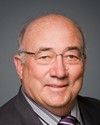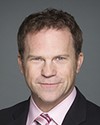Thank you, Mr. Schellenberger.
We understood from the committee staff that you wanted to begin with an overview of the programs in the heritage portfolio, so that's what I'm going to do, and I will try to go very quickly. Then I'll be happy to answer any other questions that I don't hit in the introduction.
I do want to stress that what I'm talking about is the funding available within the portfolio of Canadian Heritage. There is funding that is made available to heritage institutions by other departments, such as the Human Resources Department or the regional development agencies, but I'm only focusing on the heritage portfolio.
Clearly, the most significant investment we make is in the five national institutions: the four national museums and Library and Archives Canada. Under “Grants and Contributions”, we have a variety of programs, some of which are focused on museums and others for which museums are eligible clients. In those other programs, there is not necessarily a dedicated envelope for heritage or a sub-envelope for museums. So the total I've given you on the left-hand side of that column, the $37.8 million, is an average based on the use of the programs by heritage institutions.
The museums assistance program is the longest-standing program. It has existed since 1972. It accounts for approximately 25% of the total annual funding that goes to heritage. It has four components, one of which deals with access and promotes primarily travelling exhibitions; another promotes excellence in museological practices; the third is focused on aboriginal heritage; the fourth component is the annual funding we provide to the Canadian Museums Association to support the services it provides to its members.
The second program, the movable cultural property program, is a very small grants program of just under $1.2 million. It is used to support acquisitions by museums of cultural property that is threatened with export or that may become available on international markets. So in recent weeks you will have seen the news coverage of the 18th century Nascapi coat that is being acquired by The Rooms Provincial Museum in Newfoundland--we were able to support that--or the Southesk Collection that was in a British family and became available at auction. The Royal Alberta Museum has acquired that with support from the program.
The Young Canada Works program has two components. One is primarily a summer employment program; the other is designed to foster careers for recent graduates in relevant disciplines. We have five delivery partners for that program, of which the Canadian Museums Association is one. Of the $3 million in that program, which is part of the youth employment strategy, the museums account for $1.7 million.
In the broad package of programs generally known under the umbrella Tomorrow Starts Today, the Canadian arts and heritage sustainability program has one component that is specifically dedicated to heritage. That component focuses on fostering business skills. The museums assistance program fosters museum skills; this one fosters plans to increase financial sustainability and plans that look at the governance of institutions, that kind of activity.
The Audio-Visual Preservation Trust of Canada is a very small program, $300,000, which goes to a single recipient, the A-V Preservation Trust. You may have noticed in the news every spring their announcement of the 12 master works that are selected for special preservation treatment. That program supports that activity.
The next line of programs under “Grants and Contributions” are ones for which I'm not directly responsible. I therefore beg your indulgence if I have to get back to you with any detailed information you may ask for. Heritage institutions have access to the Cultural Spaces Canada program, which supports the improvement of infrastructure. That's another program from the Tomorrow Starts Today envelope.
Similarly, Canadian Culture Online is a partnership fund that is used to create online content and is also a source of funds for heritage institutions.
Outside the department, the Canada Council offers assistance to art museums and public galleries, particularly for the promotion of and education in contemporary art. A limited number of the fine arts museums in Canada can access that program. As well, Library and Archives Canada has a grants and contributions program focused on the needs of archives across the country.
In terms of support other than grants and contributions, under the Movable Culture Property Program, tax incentives are provided when cultural property is either donated or sold to public institutions.
The Cultural Property Review Board certifies between $100 and $200 million in cultural property each years for tax credit purposes. From a tax standpoint, the Finance Department pegs the value of these credits at between $7 and $36 million per year, depending on whether or not we consider these credits have changed people's behaviour or actions.
Two weeks ago, we discussed the Indemnification Program. It is estimated that the program has generated savings of approximately $20 million over five years in insurance costs. There are also two national centres of excellence and expertise worthy of note. Firstly, the Canadian Conservation Institute conducts research and provides training and services such as the sharing of knowledge in the conservation field. Secondly, the Canadian Heritage Information Network handles the creation, management and preservation of digital content, including national databases of museum collections across the country.
The Virtual Museum of Canada program is one of the programs managed by the network which now encompasses approximately 1,200 museums nationwide. All of these institutions work together to create digital content. The Virtual Museum is responsible for two programs, neither of which falls into the category of a grants and contributions program. Rather, they involve contracts and tenders for projects aimed at creating digital content. The goal of the Investment Program is to create major exhibits. Finally, the Community Memories Program gives small museums an opportunity to develop small exhibits relating to local history.
I'm going to stop there. I believe you have also received extracts from the department's book of summaries of the various programs that are available.
I would be more than pleased, Mr. Chairman, to answer any questions.










